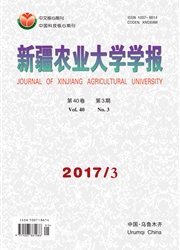

 中文摘要:
中文摘要:
利用能值理论就新疆阿克苏绿洲农业生态经济系统进行了农牧耦合分析,结果表明:阿克苏绿洲农业生态系统是一个以种植业为主,畜牧业为辅的农业生态系统;种植业和畜牧业的能值产出逐年增加,2007年分别达到71.86×10^20sej,33.27×10^20sej;近年种植业结构从以种粮为主逐渐发展为以棉为主,2007年棉花能值产出占种植业的能值产出80.63%;能值投入结构以资金投入为主,绝大多数资金投入到种植业,对于畜牧业支持较少;2007年耦合度达到1.54,农牧系统耦合性逐渐良好;环境负载率逐从2002年的6.11逐年增大到2007年的8.32,能值密度逐年增大,暴露出系统的环境压逐渐增大,尤其是土地压力逐年增大;当地若能结合自治区发展特色林果业政策实行种植业一林果业一畜牧业三者的耦合,则能加大耦合效应,利于可持续发展。
 英文摘要:
英文摘要:
This paper applied energy theory to study farming and stockbreeding coupling and analyzed the oasis agriculture eco-economic system in Aksu, Xinjiang. The results showed: The farm production is taken as dominant factor with animal husbandry assisting in this oasis; the energy output of farm production and animal husbandry had been increasing, and reached 71.86 ×10^20sej, 33.27 ×10^20 sej in 2007 respectively; the farm production structure has been changed from grain farming to cotton farming, and the energy output of cotton accounted for 80. 63% percent in the farm production in 2007; the energy input structure is taken as dominant factor which is more put into the farm production than animal husbandry; the coupling degree went up to a good condition which had already reached 1.54 in 2007; however,the environmental load ratio had been increased from 6.11 in 2002 to 8.32 in 2007; energy value degree was increased year by year, that means the environmental pressure was increased, especially the land load; it would be beneficial to sustainable development by improving the coupling effectiveness.
 同期刊论文项目
同期刊论文项目
 同项目期刊论文
同项目期刊论文
 期刊信息
期刊信息
